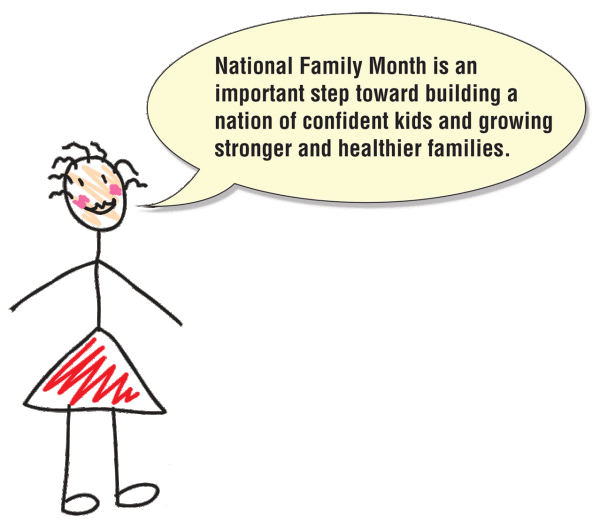MAY NEWSLETTER 2019

+++++++++++++++++++++++++++++++++++++++++++++++++++
Good day May, Do to our hearts what you do to earth's flowers.
HAPPY MOTHERS DAY

There are several national celebrations. May, 2019 is National Egg Month, National Family Month, National Bike to Work Week will take place May 13–19. National Blueberry Pie Day 2019 is observed on Sunday, April 28, 2019 National Smile Day. Description. National Smile Day is observed next on Friday, May 31st, 2019. May 1 – 31 Healthy Vision Month National Salad Month 2019.

All of this celebrations are related to our health and play a very important role in the development of how we live our life.
LAUGHTER AND SMILING
Research has shown that the health benefits of laughter are far-ranging. While more studies need to be done, studies so far have shown that laughter can help relieve pain, bring greater happiness, and even increase immunity. Positive psychology names the propensity for laughter and sense of humor as one of the 24 main signature strengths one can possess, and laughter yoga clubs are springing up across the country. Read on for more findings about the health benefits of laughter, and see how to incorporate more humor and fun into your life.
Stress Management Benefits of Laughter:

Hormones: Laughter reduces the level of stress hormones like cortisol, epinephrine (adrenaline), dopamine and growth hormone. It also increases the level of health-enhancing hormones like endorphins, and neurotransmitters. Laughter increases the number of antibody-producing cells and enhances the effectiveness of T cells. All this means a stronger immune system, as well as fewer physical effects of stress.

Physical Release: Have you ever felt like you "have to laugh or I'll cry"? Have you experienced the cleansed feeling after a good laugh? Laughter provides a physical and emotional release.
Internal Workout: A good belly laugh exercises the diaphragm, contracts the abs and even works out the shoulders, leaving muscles more relaxed afterward. It even provides a good workout for the heart.
Distraction: Laughter brings the focus away from anger, guilt, stress and negative emotions in a more beneficial way than other mere distractions.
Perspective: Studies show that our response to stressful events can be altered by whether we view something as a 'threat' or a 'challenge'. Humor can give us a more lighthearted perspective and help us view events as 'challenges', thereby making them less threatening and more positive. (For more on changing your perspective, see this article on cognitive reframing.)
Social Benefits of Laughter: Laughter connects us with others. Just as with smiling and kindness, most people find that laughter is contagious, so if you bring more laughter into your life, you can most likely help others around you to laugh more, and realize these benefits as well. By elevating the mood of those around you, you can reduce their stress levels, and perhaps improve the quality of social interaction you experience with them, reducing your stress level even more!
The Science of Smiling is related to laughter. Lots of smiling can actually make you healthier. Smiling can help reduce the level of stress-enhancing hormones like cortisol, adrenaline, and dopamine; increase the level of mood-enhancing hormones like endorphin; and reduce overall blood pressure.
Like laughter a genuine smile can make you seem more likable, attractive, intelligent and even trustworthy. But did you know that smiling more often—regardless of your mood—can improve your health and help you live longer? Discover seven of the surprising health benefits of smiling.
1. Improved Mood
Smiling can boost your mood when you’re feeling blue, and may be beneficial for people struggling with anxiety and depression. A 2010 study found that making yourself smile when you’re feeling down helps improve your mood and increases positive thoughts. So, if you’re having a bad day, try smiling anyway—it may lead to a genuine smile and lift your spirits.
2. Lower Blood Pressure
Smiling and laughing more appear to help lower your blood pressure, which is good news for your heart health. A 2009 review explains that laughter causes an initial increase in heart rate, followed by a period of muscle relaxation and a decrease in heart rate and blood pressure, which helps reduce your risk of developing heart disease.
3. Stress Relief
Did you know that smiling more often, whether you’re feeling happy or not, helps your body deal with stressful situations more effectively? A 2015 study published in Psychological Science found that smiling can result in a lower heart rate during stressful tasks. Stress generally causes increases in heart rate and blood pressure. So, maintaining a smile when stressed provides you with both psychological and physical health benefits.
4. Better Relationships
Have you noticed that you’re drawn to people who smile a lot? People who smile are perceived as being more likable than people who don’t smile, according to one 2014 study. Being likable makes it easier to build and maintain better relationships with people, which is important for your overall health and well-being. A 2010 study found that people with positive emotions have more stable marriages and better interpersonal skills than people with negative emotions. So, keep a smile on your face to help create stronger, healthier social bonds.
5. Stronger Immune Function
Believe it or not, laughter (which often begins with a smile) appears to help boost your body’s immune system. Mayo Clinic reports that laughter and positive thoughts release signaling molecules in your brain that fight stress and illnesses, while negative thoughts decrease your body’s immunity. One 2015 study found that laughter therapy increases immune responses in women who have just had babies. So, maybe laughter really is the best medicine.
6. Pain Relief
Pain relief might be the last thing you’d associate with smiling and laughter, but there are, indeed, links. Mayo Clinic reports that laughter causes your body to release its own natural painkillers. And a 2012 study found that social laughter increases your pain threshold, creating a higher pain tolerance. So, if you’re in pain due to an injury, illness or chronic disease, watch a funny movie, attend a comedy show or hang out with friends and family who make you smile.
7. Longer Life
It turns out that the fountain of youth might be right under your nose. A 2010 study found that smiling and positive emotions are associated with increased life spans. Talk about a reason to smile!
Bottom Line
Smiling and laughter are beneficial for your mind, body and overall well-being. Even if you’re feeling blue, crack a smile and reap the numerous health benefits of smiling.

NATIONAL EGG MONTH
Another topic that has been in the media lately is are eggs good or bad for you. There are many health benefits that are thrown behind the bus and are never talked about.
1. Eggs are great for the eyes. According to one study, an egg a day may prevent macular degeneraton due to the carotenoid content, specifically lutein and zeaxanthin. Both nutrients are more readily available to our bodies from eggs than from other sources. 2. In another study, researchers found that people who eat eggs every day lower their risk of developing cataracts, also because of the lutein and zeaxanthin in eggs. 3. One egg contains 6 grams of high-quality protein and all 9 essential amino acids. 4. According to a study by the Harvard School of Public Health, there is no significant link between egg consumption and heart disease. In fact, according to one study, regular consumption of eggs may help prevent blood clots, stroke, and heart attacks. 5. They are a good source of choline. One egg yolk has about 300 micrograms of choline. Choline is an important nutrient that helps regulate the brain, nervous system, and cardiovascular system. 6. They contain the right kind of fat. One egg contains just 5 grams of fat and only 1.5 grams of that is saturated fat. 7. New research shows that, contrary to previous belief, moderate consumption of eggs does not have a negative impact on cholesterol. In fact, recent studies have shown that regular consumption of two eggs per day does not affect a person's lipid profile and may, in fact, improve it. Research suggests that it is saturated fat that raises cholesterol rather than dietary cholesterol. 8. Eggs are one of the only foods that contain naturally occurring vitamin D. 9. Eggs may prevent breast cancer. In one study, women who consumed at least 6 eggs per week lowered their risk of breast cancer by 44%. 10. Eggs promote healthy hair and nails because of their high sulphur content and wide array of vitamins and minerals. Many people find their hair growing faster after adding eggs to their diet, especially if they were previously deficient in foods containing sulphur or B12.
So, I ask myself how many eggs a week are to many? The science is clear that up to 3 whole eggs per day are perfectly safe for healthy people. Summary Eggs consistently raise HDL (the “good”) cholesterol. For 70% of people, there is no increase in total or LDL cholesterol.
Eggs eaten in moderation are a valuable source of important nutrients, including B-complex vitamins that kids need for strong metabolism. A large scrambled egg provides more than one-third of the riboflavin and nearly a third of the vitamin B-12 children need daily.
The key word is moderation, with any foods. Eggs have a good nutrition value such as vitamin D, which is the only food that contain this naturally.

NATIONAL SALAD MONTH
Several times a week, I love to create a salad. I love to add colors just like an artist on a canvas. I put my mind to use a just create with vegetables. Not only are salads colorful, but are very healthy with lots of vitamins.
The pigments of plant-based foods help fight disease and help you live a more vibrant life. Better known as phytochemicals, these pigments help protect us from the damaging effects of oxidizing pollutants, which impair function and prematurely age our cells. There are seven color categories in plants: red, red/purple, orange, yellow/orange, green, yellow/green, and white/tan/brown. For example, blue, black, and red-hued berries contain a high level of oxygen radical absorbance capacity (ORAC ) to counteract the damaging effects of oxidizing substances. Let's explore some the full rainbow spectrum of produce that can benefit health. The blue/purple hues in foods are due primarily to their anthocyanin content. The anthocyanins that give these fruits their distinctive colors may help ward off heart disease by preventing clot formation. Consider deeper-toned berries, as the darker the blue hue, the higher the phytochemical concentration. Other examples in this class of "darker foods" include eggplant (especially the skin), prunes, pomegranates, purple grapes, plums, raisins, dried plums, purple asparagus and purple cabbage.
The green color in leafy vegetables such as broccoli, spinach, and kale comes from the natural plant pigment chlorophyll. These green leafy vegetables are excellent sources of vitamin K, folic acid, and potassium, as well as antioxidant compounds called carotenoids and omega-3 fatty acids. Dark leafy greens such as spinach and kale are richer in nutrients than paler iceberg lettuce. Other green veggies include: asparagus, Brussels sprouts, green beans, peas, snow peas, spinach, and zucchini.
Cruciferous green vegetables like broccoli and Brussels sprouts not only contain chlorophyll, but are also rich in phytochemicals called indoles and isothiocyanates, which induce enzymes in the liver that assist the body in removing potentially carcinogenic compounds. There is an inverse relationship between cruciferous vegetables and cancer, especially colon and bladder cancers. Cruciferous veggies also contain the phytochemical sulforaphane, which detoxifies cancer-causing chemicals before they damage the body. The color red is a flag for such health-promoting compounds as lycopene and anthocyanins. As with other colored produce, the darker and richer the tones, the more phytonutrients you'll get in return. The red pigment in tomatoes and tomato products comes from the phytochemical lycopene, a powerful antioxidant that has been associated with protection against cardiovascular disease . Cooked tomato sauces are associated with greater health benefits compared with uncooked versions because the heating process allows all carotenoids, including lycopene, to be more easily absorbed by the body. Cranberries, another red fruit whose color is due to anthocyanins, are also a good source of tannins, which prevent bacteria from attaching to cells. They have a relatively low glycemic index and can make a very healthy morning cereal topping or evening dessert. Other examples of red fruits and veggies include cherries, red grapes, raspberries, strawberries, watermelon, beets, and red peppers. Yellow/orange colored vegetables are seen most commonly during fall and include carrots, sweet potatoes, pumpkins, butternut squash, yellow peppers, and yellow corn. Fruits that contain a mixture of yellow/orange pigments include apricots, peaches, mangos, oranges, tangerines, and cantaloupe. These foods contain the pigment beta-cryptoxanthin and are rich in vitamin C and beta-carotene, which are particularly good antioxidants. Beta-cryptoxanthin , beta-carotene, and alpha-carotene are all carotenoids that the body converts to vitamin A, a nutrient integral to vision and immune function, blood sugar regulation, and skin and bone health.

Bland colors like white/tan/brown still contain important nutrients, which promote heart health. Examples of fruits in this class include bananas, brown pears, dates, and white peaches. Vegetables in this class include cauliflower, mushrooms, garlic , onions, parsnips, turnips, white-fleshed potatoes, and white corn. Picture your last meal: How did it stack up color-wise? Was the produce mainly one color, two colors, or three or more? By adding a variety of colorful fruits and vegetables to your plate, you can amp up the nutrient value of each meal. We should be eating right year round, but if you've been trying to find the right time to make changes, spring is the perfect opportunity to colorize your plate. There is better health at the end of the rainbow!

NATIONAL BLUEBERRY MONTH
Blueberries are antiaging superstars, blueberries are loaded with antioxidants, especially anthocyanins, which have been shown to improve vision and brain function. Studies show that eating blueberries slows impairments in motor coordination and memory that accompany aging. These little berries also reduce inflammation, which is inextricably linked with virtually every chronic disease from Alzheimer's and Parkinson's, to diabetes and heart disease. Other studies show that blueberries have much greater anticancer activity than other fruits.
The potent antioxidents in blueberries may have wide value in supporting our health, starting with cancer. Antioxidants fight cancer by ridding the body of free radicals before they can do their damage to cells. Try topping oatmeal, cold cereal, yogurt, even salad.

NATIONAL HEALTH VISION MONTH
Just the other day I received my new eye glasses, its funny just in time for National Health Vision Month. The most common vision problems are refractive errors, more commonly known as nearsightedness, farsightedness, astigmatism and presbyopia. Refractive errors occur when the shape of the eye prevents light from focusing directly on the retina. The length of the eyeball (either longer or shorter), changes in the shape of the cornea, or aging of the lens can cause refractive errors. Most people have one or more of these conditions.
Don't forget to take care of your eye's this month.

NATIONAL FAMILY MONTH
Family is a unit that is built on trust and growth. One of the most important steps to keep a family healthy is nutrition.
Health as a positive vitality, not merely the absence of disease. Promotion of organ reserve.
Sing Me A Song Of Healing
My soul is glowing so sing me a song that will heal me. I need the reinsurance that everything Is alright for I am fearing the worst. My soul is glowing so give me a melody that I can remember. This will take over my heart and give me a peace of mind.
My soul is glowing so come with me to the place of belief. Lead me to the journey of fullness and end with the note of high.
On average, 79 people receive an organ transplant each day, and many more than that need it. These marvelous biological machines can last a lifetime, but time and toil take their toll. Think of the many organ systems in your body (cardiovascular, digestive, excretory, immune, etc.) as an elaborate engine with perfectly timed inner workings and gears. The lungs bring in oxygen, your heart delivers that oxygen to the other organs via arteries and blood, which also carry nutrients digested by the stomach and intestine and filtered by your kidneys, and so on. This inward engine needs to refuel with premium nutrients often.

This product - CORE IS A CLEANSING VITAMIN BLEND OF SEEDS AND GREENS THAT CONTAINS 20 TIMES THE NUTRIENT DENSITY OF FRUITS AND VEGETABLES.
FOR MORE INFORMATION GO TO : https://www.thejourneytogoodhealth.com/core
Final words from author; take time with family and stop and smell the roses

















